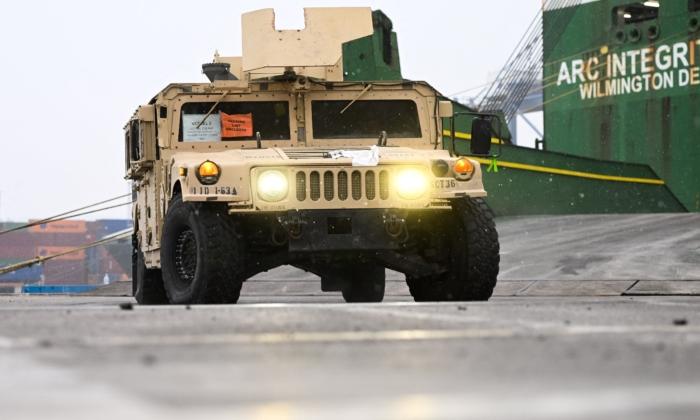California Gov. Gavin Newsom ordered the state’s water resources agency to find ways to maximize water storage to catch some of the stormwater expected to hit the state in an upcoming “atmospheric river” event, he announced Jan. 31.
The executive order aims to make it easier to divert and store water from incoming winter storms, including the downpour expected to hit Northern California starting Friday.
Atmospheric rivers are long, narrow regions of water vapor in the atmosphere that transport moisture from the tropics, according to the National Oceanic and Atmospheric Administration.
“It is more important than ever that we maximize every opportunity to recharge our groundwater supplies,” Newsom said in a statement. “As we anticipate rain and snow in Northern California, we are also preparing to use every last drop to boost our water supply for communities and farms throughout the state.”
By storing the water, Newsom said the state will be creating a “literal rainy day fund” to help residents recover from drought and prepare for the future.
The order directs the California Department of Water Resources to take “all feasible and appropriate action” to maximize the diversion of excess water that becomes available as a result of the anticipated winter storms, and other storms, and send it to storage or the San Luis Reservoir, according to the executive action.
The governor also ordered the water resources department, State Water Resources Control Board, the Natural Resources Agency, and the state’s Environmental Protection Agency to identify and remove, if possible, any obstacles that will hinder efforts to divert and store the water.
The action also allows more water to be stored in state reservoirs and helps recharge underground aquifers, Newsom said.
Newsom is also deploying state resources and thousands of personnel, including swift water rescue crews and fire engines, to communities throughout Northern California in anticipation of the storm, according to his office.
The water issues that have plagued California residents for years turned deadly most recently during the destructive Los Angeles-area fires.

The Santa Ynez Reservoir in the Pacific Palisades neighborhood, built for such an emergency, was offline for maintenance and empty when the fire started.
“I am calling for an independent investigation into the loss of water pressure to local fire hydrants and the reported unavailability of water supplies from the Santa Ynez Reservoir,” Newsom wrote on social media platform X on Jan. 10.
Newsom took some heat from President Donald Trump before he visited the Palisades and Eaton fire zones this month.

State officials said that the military didn’t enter California and that federal officials turned on a federal water-pumping facility in Northern California after a three-day maintenance period.







